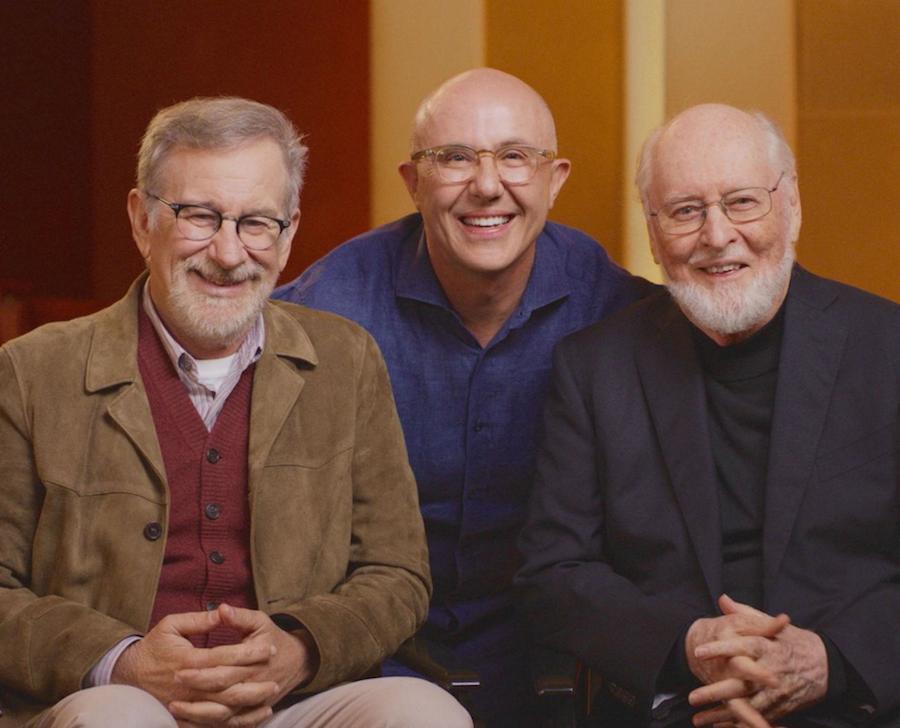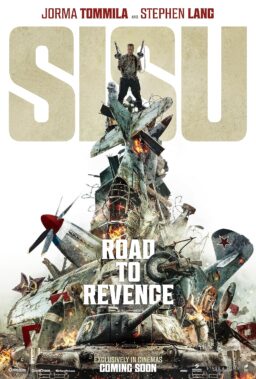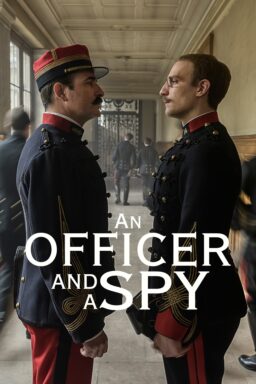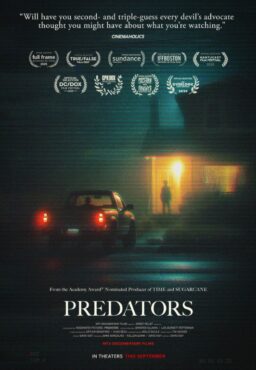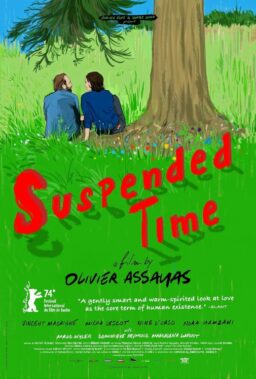If you have enjoyed the making-of documentaries on DVD and Blu-ray editions of films by Alfred Hitchcock, Steven Spielberg, Brian De Palma, Sidney Lumet or Martin Scorsese, chances are you have encountered the work of Laurent Bouzereau. Few people have expanded and enriched my love of cinema as much as this tireless filmmaker, whose invaluable analyses of classic pictures served as my film school long before I entered college. His illuminating series of featurettes on Spielberg’s “A.I. Artificial Intelligence” caused me to see the film in a whole new light, transforming it from a frustrating curiosity into an audacious masterpiece. Bouzereau also captured the thrill of a live John Williams performance, as the legendary composer conducted his score for “E.T. The Extra-Terrestrial” before a sold-out crowd at the Shrine Auditorium, in honor of the film’s 20th anniversary. Countless sections of Bouzereau’s own work deserve to be studied in film schools as well, such as the masterfully edited prologue to his documentary on Hitchcock’s underrated 1956 remake of “The Man Who Knew Too Much,” which conveys the full emotional arc of the picture in under two minutes.
Yet perhaps the crowning achievement of Bouzereau’s career was “Five Came Back,” a staggering film based on Mark Harris’ essential book about the five Hollywood directors who documented WWII firsthand, including Frank Capra, whose “It’s a Wonderful Life” is as much a postwar landmark as “The Best Years of Our Lives.” Though “Five Came Back” was released last March as a three-part miniseries on Netflix, it’s also a three-hour opus worthy of being ranked alongside the best films of recent years. In honor of his latest documentary on the newly released disc of “Ready Player One,” Bouzereau spoke with RogerEbert.com about his lifelong obsession with cinema, his painstaking research process and the behind-the-scenes revelations that make his job so rewarding.
Your work has inspired so many people around the world to reevaluate the work of great filmmakers, and in the process, you’ve truly become one of my favorite filmmakers.
First of all, thank you so much for your kind words. I will take the compliment, though it’s not the way that I see myself. You never see yourself as having any kind of impact or importance, but when people come up to me and say, “Oh my god, I watched ‘The Making of ‘Jaws’’ and it was like going to film school,” that affirms why I made these documentaries in the first place. My intention was to create the definitive encyclopedia on each of these films by highlighting the craft and every single talent behind it. When film was originally created, it wasn’t meant to be experienced more than once—unlike music or painting or photography. But with the development of home entertainment, you could get these movies on video and discs. It’s given a second chance to some films while offering another perspective on many classics, allowing viewers the opportunity to re-experience them just as you would a good record or song or music cue.
I think it is so important to document how these films are made because it allows the viewer to bring a fresh new perspective to them, and in doing so, gain a new appreciation. When fans of “Jaws” learn the behind-the-scenes stories, they will start paying attention to the music or another aspect of the craft. It’s like if you read a great book only to find out afterward that the author died or it’s the only book the author has written. Suddenly that information gives you a new perspective on the work. When you watch “The Making of ‘Jaws,’” you realize that many of the scariest scenes were designed that way because the shark wasn’t working. It makes me so happy when people appreciate the effort that I’ve put into these films.
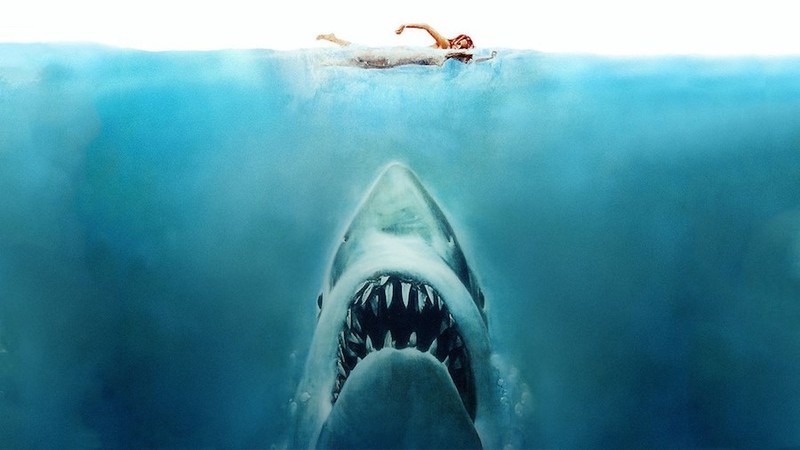
What inspired you to collect memorabilia for Spielberg and De Palma films upon their initial release?
To answer your question, I must tell you about my first encounter with the art form. My mom kept a diary of my life from zero to seven years old and apparently when I was five, I said that I wanted to be a film director. I lived in a small town outside Paris, and I remember going to the movies and not looking at the screen at all. I was looking back at the beam of light and wondering where it was coming from. I noticed that the light was jumping from one window to the next, and I told my dad at a very young age that I wanted to “see the wizard.” My dad arranged for me to go up to the projection booth, and I walked up a staircase that felt like it was a thousand steps, but probably was only ten. I opened the door and it was this cave, literally—overheated and gross—and there was a projectionist there. He explained to me that when you see the dot in the upper-right-hand corner of the frame, that means he has to change projectors. I felt that I had been given the keys to the kingdom, and from that moment onward, I was always looking for that dot.
I was a kid that kept to himself. I didn’t play sports and wasn’t a very good student. Movies were my primary interest, so I started buying posters. My first was “Gone With the Wind” and then I got “The Towering Inferno.” It wasn’t long before my bedroom turned into a movie theater. My mom gave me a white sheet that I could put behind the curtain in my bedroom. I had a silent movie projector that enabled me to screen a super 8 print of “King Kong” for my parents and sisters, and I’d accompany it with music. My dad was not in the film business at all, but through a connection, he knew a guy who worked at the studio where the James Bond film “Moonraker” was made. I got to go on the set for a week and work with the sound mixer, who hated me because I kept walking during takes. [laughs] I was just a kid, and I got to see Lois Chiles, whom I still talk to, as well as Roger Moore and Richard Kiel. My grandmother actually worked at the film studio in the lab section doing color timing, so at around 16, I did a whole internship in the color timing division, watching dailies of “Tess” and other movies. I was slowly soaking up experience, and I knew my calling.
I quickly became obsessed with American cinema. I loved disaster movies and spectacles like “The Golden Voyage of Sinbad,” and I also enjoyed romances such as “The Other Side of Midnight.” I loved anything that was celebrating the artifice of cinema. French and European films were too realistic, and it always cracked me up when filmmakers would say, “This should feel like real life.” I’d think, ‘Well, what’s the point, then? Just watch the news.’ [laughs] Hitchcock embraced that artifice in every film. I can’t imagine what it would’ve felt like to discover the shower sequence in “Psycho” during the film’s initial release, though I did see “Alien” when it first opened in France. All I knew was that it was a science-fiction movie because I had seen the poster. I had no clue that an alien was going to pop out of somebody’s stomach. Seeing that movie as a kid with zero expectations was super-shocking, and it is so sad that this sort of experience is completely gone today. Everything has to be oversold.
I was too young to see “Jaws” in 1975 because it was restricted for anyone under 13, so I caught the rerelease. Because no new movies opened in France during the summer, they would show old movies, and that’s how I got to see “Gone With the Wind,” “The Ten Commandments,” “Ben-Hur” and Sean Connery’s James Bond films on the big screen. “Jaws” was so popular that it would get rereleased every summer. “Psycho” was rereleased the week I turned 18, and since it was rated X—barring anyone under 18—seeing the film was my birthday present. I saw the first show on a weekday in a theater on the Champs Elysées, and I was the only one in the theater. I was totally f—king scared. [laughs] When a movie gives you a creative awakening, you want to own it in some way, and find out everything there is to know about it. That is why I started collecting lobby cards. I’d look at many of them and go, “Wait a minute, that scene is not in the movie!” They released a set of 24 cards for Scorsese’s “New York, New York”—a film that I loved, even though I’m not a big fan of musicals—and half of the stills were of scenes that weren’t in the movie. So I started investigating, which was tricky to do in the days before the internet, and found that the movie had been cut and recut. That’s when I realized, ‘My gosh, when you edit movies, you actually drop scenes.’ All of this now seems obvious, but I was discovering it all on my own.
This collection of images helped me appreciate the art form and understand it better. I don’t just collect to collect. I collect to stimulate my imagination, and I still buy posters from the same place I did when I was a kid. There was a store called Limelight that I used to go to every Saturday at 11am. I’d always buy something, but as a teenager, I had no money, so I would often trade stuff. The owner of a gas station once caught me stealing a poster for “The Man Who Would Be King.” [laughs] Anyway, I remember during one visit to Limelight, I was looking forward to the release of Truffaut’s “The Last Metro.” I was a big Truffaut fan, not because he was a French director but because he had worked with Steven Spielberg, and I had written a book on Hitchcock. Suddenly, Truffaut walks into the store, and I almost passed out. When I went up and talked to him, he told me that he was super-scared about “The Last Metro” coming out because all his movies had been flops and his career was in the tank. I didn’t expect him to open up to me in that way and it left me traumatized. Eventually, I came to America with the dream of meeting Steven and Brian De Palma and doing this type of documentary work, which didn’t exist at that time. When I did my first project for Universal—the documentary on the laserdisc for “1941,” which came out after “The Making of ‘Jaws’”—my contract with the studio was to make a feature. They didn’t have a template for the kind of work I did.
Decades before video essays were in vogue, your documentaries illuminated the parallels between written and visual film analyses. I’ve always felt that writing and editing are similar processes in how they require you to assemble raw footage or information, and the editing in your films is always impeccable.
I have worked with pretty much the same team of editors from the beginning. I started off with David Palmer, who recently co-produced a very good film called “Wildling,” and he is a total savant. We met through work and found that we were the exact same age and had the same tastes, such as a love of film music. He did several of my first projects including “1941,” “Jaws,” “The Birds” and “Taxi Driver.” As I got more projects, I hired and worked with awesome editors like Jason Summers, Andy Cohen and Jeff Pickett. In each case, I chose them on the basis of a gut reaction. It was very empowering to know that I had good instincts about whether someone was the right person for a project. Even though I’m not the one doing the editing, I know within minutes if an editor has good or bad or average instincts. The culmination of all this was “Five Came Back,” the series that I did for Netflix, and my genius editor, Will Znidaric, won an American Cinema Editors award for it. That was a real puzzle to put together.
Writing and filming are completely different processes. I don’t consider myself a critic because my point of view comes from wanting to understand the form and to present what goes into it so it can be appreciated. I’m not one to bring in my point of view about whether the movie is good or bad, that is not where I live. But whether you are doing documentaries or narrative film or writing an essay, it all boils down to storytelling. When I’m onset with my cameraman, every single shot that we film has to be in service of the story. You don’t just randomly film something—it needs to start somewhere, go somewhere and end somewhere. When you are talking to people about their movie, you have to take them on a journey in the way that you write an article or a book. Each of my documentaries need to have that sense of journey, and I’m sort of old school in that I write everything before the film is edited. It is written as a script, and I have titles for all of the sections. You don’t necessarily have to stick to it, but you have to walk in with a vision. You have to walk in with a sense of what is going to be the journey, whether the piece is two hours long or three minutes long.
When there was demand for shorter behind-the-scenes content, you split your feature-length documentaries into featurettes which, when viewed altogether, still play like a feature.
That is exactly what I do. I will structure them in a way where there is a sense of a journey from one piece to the next when you watch them back-to-back. The featurettes for a particular movie are often done by the same editor, depending on the length or the deadline. It’s so sad when IMDb labels each of my featurettes as a short subject, since they are part of my full-length pieces on films such as “A.I.” or “Reds.” They just happen to be divided up into shorter pieces for legal reasons having to do with unions and SAG and other factors. When I made my latest documentary for “Ready Player One,” the studio was really fantastic. Jonathan Gaines and Paul Hemstreet, who were my executives at Warners, wanted me to do an old-fashioned making-of doc, and I mean that in the best sense of the word. They were so supportive of my intention to have the form of my documentary mirror what the movie was: a big tribute to 80s filmmaking. It was a fan’s love letter to movies, and hopefully my behind-the-scenes material reflects that.
The history of Hollywood is all about the relationship between the studios and the filmmakers, and I’m amazed at how open the studios have been to my projects. Columbia gave me a chance to do long documentaries on “The Big Chill,” “Silverado” and “Taxi Driver.” I couldn’t believe that no one had made an in-depth documentary about “Taxi Driver” until I made mine in 1998. Sometimes, the press doesn’t want to recognize us as true filmmakers, and I’m like, “Well what would you give to have this sort of document on Orson Welles filming ‘Citizen Kane’ or Hitchcock filming ‘Psycho’ or even Steven filming ‘Jaws’?” Prior to home video, movies weren’t perceived as something that would live beyond its initial release, except on television, so to be given a chance to document this work, even retrospectively, is a hugely important thing to do. It surprises me when the people who create making-of documentaries are put down in the trades. I applaud the other people who are documenting film along with me, and I am proud that I was at the origin of this type of work. I hopefully was able to make a difference, not because of who I am but because of the fantastic movies and filmmakers I was associated with. I am extremely grateful to Steven and Brian and the people who trusted me to do justice to those particular pieces.

Another filmmaker could’ve easily put together a surface-level making-of doc, but your films on people like Spielberg are so in-depth that they give us a sense of the man as well as the filmmaker, whether it’s his childlike love of gross-out gags on the set of “Indiana Jones and the Temple of Doom,” or his gift for communicating with children like Cary Guffey in “Close Encounters of the Third Kind.” By juxtaposing your interviews with the film excerpts, you show how Spielberg elicited every one of the boy’s facial expressions.
When I was making my first documentaries, I originally decided not to cut away too much from the interview footage. I couldn’t believe that I was sitting across from Steven Spielberg or Dick Zanuck or Peter Benchley or even Susan Backlinie, who played Chrissie in “Jaws.” I did not want to interrupt these interviews because it would take away from the performances they were giving me. I was treating them almost as actors. I could see in their eyes the excitement they felt while reminiscing about something they hadn’t talked about in 25 or 30 years, and when that happened, I wanted to stay with them. I want whomever is watching the footage to have the same feeling that I did when I sat across from these people. That’s why I remove myself when I ask a question. When I did “The Making of ‘Jaws,’” Steven came in and said, “I have an hour, and then I have to run to a meeting.” He was obviously super-busy, as he still is, but afterward he said, “Do not go away, I will be back in exactly two hours.” And he came back and gave me some more. I could tell something special was happening.
Before every interview, I had done tons and tons of research. I would go through all the Universal archives and look at all the memos. I created a bible that I gave Steven of all the movies I documented early in my career, such as “Jaws,” “1941” and “E.T.” I would follow the film’s continuity scene by scene, beginning with the opening titles of “Jaws,” and I would write down everything that I found out about each moment. At any point, I could jump to a scene in the film and locate everything I had learned about it. Again, this was before Google or any kind of online research. I looked at unit photography, went into the studio’s vault in the valley and even searched in dumpsters for posters. I poured my heart and soul into retracing the history of these films, particularly those that weren’t documented with a film camera—including “Taxi Driver,” “Jaws,” “Scarface” and all of the Hitchcock movies. I discovered that De Niro actually did not shave his head for “Taxi Driver” because he was doing “1900” at the time with Bertolucci, and he had to have his full head of hair. So Dick Smith, who did the makeup, explained to me his ingenious method for creating a little bit of stubble on De Niro’s bald cap that made the effect seamless. I wouldn’t have known to ask about this if I hadn’t found a photo session in the Columbia archives.
I never walk into those interview situations unprepared. It’s like “Rashomon,” in a way. Everyone has a different point of view and a different way of experiencing the exact same event. They all come at it from their own perspective and their own personal role on the film. They often won’t even know where to begin, so I have to be their memory for them. With Steven, it was all about the details. I noticed that the sound effect in “Jaws” of the shark falling to the bottom of the ocean after it exploded had a familiar sound. It was the exact same sound Steven had used in “Duel” when the truck goes over the cliff. When I told him this, he went, “Oh my god, it is! It’s the sound from a dinosaur movie I loved at Universal, and I put it in both films.” That kind of observation simply came from watching those movies over and over again to soak myself into them. On Steven’s sets, everybody knows me, so they know they can come up to me and say, “Tomorrow we have a rehearsal.” It’s so great to see everybody wanting to help tell the story of how their film was made, particularly when it’s directed by someone like Steven, whose process is so unique and creative.
Speaking of those little details, there’s one you pinpointed in your documentary “All About ‘The Birds’” that knocked me for a loop. Rod Taylor mimes opening a door, and through clever lighting, we never question the illusion. Techniques like these are what made Hitchcock my all-time favorite filmmaker.
I am so happy you mention Hitchcock because I never tire from watching his films. I re-watch them pretty much all the time. I go through phases where I will be watching a certain segment of his career, such as his early American films like “Rebecca,” “Suspicion,” “The Paradine Case” and “Spellbound.” Then I’ll watch his later work—even a film like “Torn Curtain,” which is not a great movie by any means, but it has moments of complete brilliance and beauty where you see the genius. Every time I watch a movie, I take notes about things like framing and composition and sound effects. Hitchcock’s work represents the purest form of filmmaking because when he started directing, the movies were barely born, so everything that he created was experimental. Throughout his entire career, he continuously shows what an experimental director he is, even in commercial successes like “Psycho” or “North by Northwest.” He pushed the envelope even further in “The Birds” and then “Marnie,” which is a completely misunderstood masterpiece. You could do a whole anthropological study of his work because it has so many layers.
I get the sense that your indispensable 1993 book, The Alfred Hitchcock Quote Book, somewhat resembles the notes you would take during screenings—magnifying details in different pictures and drawing connections between them.
I had so much fun writing that book. I published it at a time when certain movies didn’t even exist on video. It was so hard to track them down in order to put the book together. For me, it was an exercise in illustrating what an auteur Hitchcock was because everything was connected. Sometimes characters in different movies would be repeating the same lines. Every brilliant artist has signature themes—it’s certainly true for Steven and De Palma—and since Hitchcock was at the origin of cinema, his themes were present even before his first sound picture, “Blackmail,” and echo all the way down to “Frenzy” and even “Family Plot.” In the quotes I compiled, you can see how concerned Hitchcock was with food and how it leads to sex and murder. Very few people have read the book, but I’m glad somebody did. [laughs]

One of your first big gigs in the film industry was recording an audio commentary track for Criterion’s laserdisc of “Carrie.” I was so moved by the documentary you later made about the film, and how it emphasized the humanity amidst the horror, as observed in Carrie’s tender scenes with her teacher, Miss Collins (Betty Buckley). What special meaning does that film have for you?
I love Stephen King not only as a writer but as a person, and I’m actually developing a feature film based on one of his stories. Stephen as a writer is the equivalent of Alfred Hitchcock as a filmmaker. He is one of the greatest people I have ever met, and his loyalty, kindness and humanity never fail to inspire me. The same is true of Steven Spielberg. Carrie was Stephen’s first big success as a writer, and when you look at it, you understand everything about its author—everything that’s to come and everything that he stands for. His work is defined by beautiful emotion and situations we can all relate to. How De Palma orchestrated his film adaptation—deviating from the book with his climactic dream sequence—was masterful. Even though he had already made “Sisters” and “Phantom of the Paradise,” “Carrie” was his first big success, the one that defined him the most as a filmmaker. You see many echoes of it in “Dressed to Kill.” Both films begin with a shower sequence, and though it was done on a grander scale and was much more erotic in “Dressed to Kill,” both scenes are shocking. Another parallel between the films is that they both end with a nightmare sequence.
I remember noticing at the end of “Carrie,” when Amy Irving is walking towards the house during the nightmare, you can see for just a few seconds cars driving backwards down the road in the distance. That tells you they shot the scene with Amy walking backwards, and the film was then reversed. I loved the work that Jack Fisk, the production designer, did in that movie. Everything in Carrie’s house reflects the religious fanaticism of her mother, including that mutilated statue in the closet where the girl is locked when punished. The idea of Carrie later killing her mother by replicating the statue—positioning her body and the knives in a similar fashion—was so brilliant. I also love the use of split screens in De Palma’s work in how they stand for split personalities. In “Dressed to Kill,” Angie Dickinson is a married mother, but she’s also a frustrated, sexually repressed person. Carrie is an ugly duckling who has been bullied in school and at home, but at the same time, she is a fearsome entity with hidden supernatural powers. In both cases, De Palma conveys that duality via split screen. The style that he chooses to tell these stories isn’t simply fueled by a need to show off. It reflects the overarching theme of his work, expressing how the same person or event will appear different, depending on your point of view. “Scarface” was a departure for De Palma in terms of visual style, and I remember being disappointed by it at first. It was more straightforward, but on second viewing, I was able to appreciate its incredible artistry.
What struck me the most about “Ready Player One” was how it served as Spielberg’s ode to cherished colleagues like Robert Zemeckis. The film’s echoes of “Back to the Future” and “Roger Rabbit” are only intensified by the Alan Silvestri score.
Those film references were already in the book, so Steven’s decision to embrace this movie tells you that he had a real interest in paying tribute to that era of filmmaking. He was thriving during the 80s and created Amblin during that decade. He refers to Bob Zemeckis in my documentary as his first protégé. The DeLorean in “Back to the Future” was very much part of the original book, and Steven purposely chose to not be too self-referential in the film. He wasn’t going to pay tribute to himself, so he instead honored the filmmakers who grew from his generation, like Bob and others. There were so many different events around the release of the film, and I spoke with Steven about the campaign they created where they inserted characters from “Ready Player One” into 80s film posters. The author of the book, Ernie Cline, also co-wrote the script with Zak Penn, and he became a really close friend. We did so much together over the past two years, and when the project wrapped a few months ago, it was kind of heartbreaking. Everyone moves on to other projects, and though we remain friends, it’s not the same as when you are anticipating the release of a film. I live with these movies for a long time, especially the ones with big special effects because they require an extensive postproduction process.
“The Post” was very quick but so intense, and it became one of my favorite experiences ever on a project. Every day was a different set, and I moved to New York for a month during the production. It was like being part of a movement because the film was tackling important issues that are still going on today. There was this sense of urgency to tell that story, and the documentary portion was super-important because I got to talk to the families of Ben Bradlee and Katharine Graham. I feel so privileged when I look at all the people I’ve interviewed, not just the directors and stars, but the crew—cinematographers like Janusz Kaminski, production designers like Rick Carter and composers like John Williams and Alan Silvestri—as well as the real-life subjects and their families. Every interview is a challenge because I have to educate myself beforehand. It’s like going back to school and taking a course on journalism or virtual reality. It’s an incredible job, and I’m very blessed to have it.
Laurent Bouzereau’s latest documentaries can be viewed on the Blu-rays of “Ready Player One” and “The Post.”
For more information on Laurent, visit his official site.

